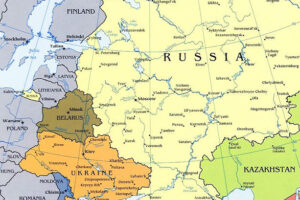Getting Each Other Wrong

(Kennan Institute – wilsoncenter.org/program/kennan-institute – Maxim Trudolyubov, Senior Fellow, Editor-at-Large, Vedomosti Daily – June 14, 2016)
Politicians have to walk the walk in order to be credible. This is even more true in today’s world, given the rise of populist demagoguery and the sorry state of trust between the most important players. The dialogue taking place between Russia, the U.S., Germany and other powers primarily consists of actions. An annexation is a response to a revolution; a sanctions regime is a response to an annexation; a military operation is a response to sanctions, etc.
In a dialogue such as this, accurately predicting the other’s moves becomes paramount, but Russia, the U.S., and European countries each read the world differently. Misreading the other side’s posture, or reading too much into it, may lead to scary consequences.
One of the early breaking points between Russia and the West was the Kremlin’s reading of the so-called Rose Revolution in Georgia in 2003 and the Orange Revolution in Ukraine in 2004. The Kremlin has since qualified all attempts at a disruptive change of power as hostile acts, even those that happened before Tbilisi (for example in Serbia in 2000), or those that happened far from the Russian border (Egypt in 2011). With time, this reading of events grew into a peculiar understanding of warfare that was codified in the famed 2013 article by the Chief of the Russian General Staff, Valery Gerasimov, headlined The Value of Science is in the Foresight (or just: The Value of Science in Prediction).
As some thoughtful Russia watchers have pointed out, Gerasimov, new on the job at the time of his writing, spent most of his treatise scrutinizing how the West conducts war (see Michael Kofman’s piece), not proposing a specific roadmap of Russian action. His piece was not a declaration of a new military doctrine, but an exposition of a certain “view of the operational environment and the nature of future war.”
Gerasimov was summing up a view that was already deeply rooted within the Russian security and policy communities, and conservative writers had been buzzing about these ideas for years. The head of Russia’s Security Council, Nikolai Patrushev, had been popularizing this view tirelessly, long before 2013. Being a military man, Gerasimov just added a military twist to a well-known narrative: a revolution appeared to be a form of warfare, not just some hostile policy.
This vision had already led to a mighty spending spree on new arms before Gerasimov was appointed. The financial basis for the program was not a reformed economy, but an oil windfall. Moscow postponed most privatization programs, stopped worrying about the investment climate, and let big businesses use foreign jurisdictions for incorporation and conflict resolution instead of building a friendly legal environment for business inside Russia. One does not need a competitive environment, this thinking apparently goes, when one relies chiefly on state-owned or Kremlin-connected businesses to build rockets, tanks, boats, guns, and munitions.
This thinking resulted in Russia basing its triumphal comeback to power politics on volatile export revenues, a predictably shaky foundation. This has become obvious recently: Russia’s defense spending, which was growing for the past 15 years, has stalled. It remains at 3.8 percent of the GDP this year, just like in 2015, but it is declining in real terms. On the other hand, the defense industry cannot stomach even this diminished inflow: in January to April, budget utilization for defense spending was 30 percent less, year on year. Thus, Russia can hardly increase its military spending.
The irony of the moment is the fact that Moscow is running out of capacity exactly when others have started to respond to Russia’s assertive behavior by spending more on their military. The year 2016 will be the first year with increased defense spending among European NATO members. After years of effort, Moscow has finally convinced its European neighbors that Russia does represent a credible threat to the region.
Even Germany has scrapped a 25-year-old cap on the number of troops in the Bundeswehr. On top of the recent increase in the defense budget – from 34.3 to 39.2 billion euros ($49.1 – $44.7 billion) by 2020, Germany will also add some 7,000 new troops to its military – and an additional 14,300 soldiers – over the next seven years.
The Russian security community has been reading too much into what the West was doing during the previous decade. Now it is the West’s turn to read too much into what Russia has been doing. Western military analysts have recognized that Russian armed forces have grown more agile than they have ever been before. Russia is now perceived by many as a revisionist state that has put military mobilization at the center of its strategic thinking. And here again, the Western and Russian readings of the international environment is decidedly different: “While the US military is cutting back on heavy conventional capabilities, Russia is looking at a similar future operational environment, and doubling down on hers… while Western militaries have been engaged in low-intensity counter-insurgency-type warfare for much of the past 15 years, Russia has recently been deploying high-intensity firepower,” Andrew Monaghan writes in an interesting paper on Russian state mobilization.
When reading Russia’s behavior, it is important to keep in mind that Russia is using its ostentatious assertiveness to compensate for its economic weaknesses. “The USSR had 10 percent of the global GDP and was growing; we only have 1.7 percent and shrinking. Yes, we assert that we are great both historically and in terms of our military might,” the influential Russian economist Alexander Auzan said in a recent interview, “but a primitive and dependent economy inhibits our drive.”
